
Stakeholders, including all constituents impacted by a company’s business – shareholders, clients, management, employees and communities in which they operate, including state and local community leaders – have a crucial role in this process, and their involvement and support is invaluable.
According to the United Nations, 45 percent of public companies (9,000 companies from over 140 countries), have committed to reducing greenhouse gas emissions by 2030. Carbon dioxide accounts for 76 percent of global greenhouse gas emissions. Decarbonization, the process of reducing or eliminating carbon dioxide (CO2) emissions, is not just a part of a business’s energy transition and risk reduction plan; it catalyzes sustainable business practices, paving the way for a more sustainable economy.
This article, focused on companies operating in the U.S., discusses designing a decarbonization strategy and the financial and social return on investment (ROI). The impact of decarbonization varies across economic industry sectors, with specific industries able to reduce carbon emissions by 60 to 80 percent and achieve positive financial outcomes.
The Beginning
The Greenhouse Gas Protocol is a critical element of the energy transition, promoting transparency, accountability, and sustainable practices. First publicly released in 2001 and revised over the years, the Protocol is a comprehensive global standardized framework. It is designed to measure and manage Scope 1, 2 and 3 greenhouse gas (GHG) emissions from electricity and other energy purchases and account for their value chain emissions.
• Scope 1: Direct emissions from sources within a company’s property or operations
• Scope 2: Indirect emissions resulting from purchased electricity
• Scope 3: All other indirect emissions associated with an enterprise’s activities
Decarbonization
Denne historien er fra Summer 2024-utgaven av ENERGIES.
Start din 7-dagers gratis prøveperiode på Magzter GOLD for å få tilgang til tusenvis av utvalgte premiumhistorier og 9000+ magasiner og aviser.
Allerede abonnent ? Logg på
Denne historien er fra Summer 2024-utgaven av ENERGIES.
Start din 7-dagers gratis prøveperiode på Magzter GOLD for å få tilgang til tusenvis av utvalgte premiumhistorier og 9000+ magasiner og aviser.
Allerede abonnent? Logg på

MAKING WIND ENERGY EVEN MORE SUSTAINABLE
With Voodin Blade Technology’s laminated veneer lumber blades, wind turbines can produce up to 78 percent fewer CO2 emissions, and production costs can decrease by up to 20 percent compared to current solutions.

INTRODUCTION TO CHAPTER 2: ASSESS THE OPPORTUNITY
I had a sales meeting with an executive for a company headquartered in London, England. We met in the lobby, and he ushered me into his office.
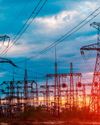
SURVIVING THE SURGE: STRATEGIES FOR MANAGING ELECTRICITY IN THE FACE OF GRID INSTABILITY
Historically, business leaders have not had to prioritize electricity when auditing or improving their supply chain management.

LOWERING CARBON EMISSIONS, SAVING MONEY, IMPROVING LIVES AND NATURE
Public and private enterprises are increasingly designing an energy transition strategy for their business given economic opportunities, legal and regulatory requirements, environmental, health and safety benefits, new technologies, and increasing stakeholder demand.

CEO Santosh Nanda STAKES GROUND IN THE ENERGY TRANSITION LAND RUSH
As the world progresses, software solutions have infiltrated all sectors and industries.
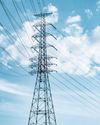
THE IMPACT OF GREEN HYDROGEN ON GRID STABILITY
Green hydrogen is one of the most eco-friendly forms of renewable energy creation.

RE+ 24
After the success of RE+ 23 last year boasting over 40,000 attendees and 1,300+ exhibitors, RE+ 24 is set to make history as it celebrates its 20th year at the Anaheim Convention Center & Campus in Anaheim, California.
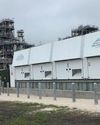
WEATHERING THE STORM: LEVERAGING DATADRIVEN RESILIENCY SOLUTIONS TO PROTECT CRITICAL INFRASTRUCTURE
As climate change intensifies, the vulnerability of our electrical grid to extreme weather events is becoming increasingly evident.
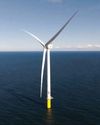
FLIPPING THE SWITCH: VINEYARD WIND 1 PHASE 1
As federal approvals continue to open opportunities for commercial offshore wind projects, the earliest approved projects are now coming online. In early 2024, Vineyard Wind 1, located just 14 miles off the coast of Martha’s Vineyard, began sending electricity to the grid.
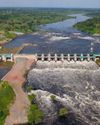
UGANDA'S RENEWABLE ENERGY AMBITIONS
In an attempt to convey its beauty, abundant wildlife, and natural wealth of the land, Winston Churchill, an early explorer of Uganda, called it the “Pearl of Africa” in his 1908 book, My African Journey.